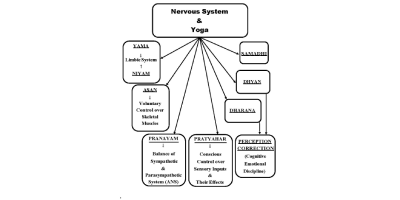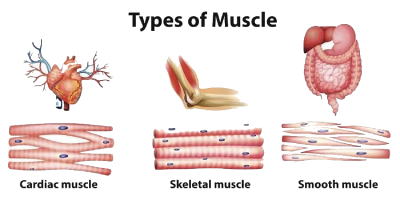- Human Anatomy.
- Human Physiology.
- What is Fitness? Exercise Physiology.
- What is Health? Yogic Physiology.
- Yoga Postures – Muscles & Joint Movements.
Theory

In addition to knowing Human Anatomy to study joints & muscles,the human physiology covers types of muscles, their energy supply, fast & slow twitch fibres, terms like strength, endurance, tone, concentric & eccentric contractions. This course elaborates about exercise physiology to explain the changes occurring in cardiovascular respiratory, endocrinol & metabolic systems of body.
Further this course explains the difference between Fitness & Health where Health is a comprehensive term. With this introduction,it gives a brief of Ashtang Yoga & Hatha Yoga. The neurological aspects In the form of sensory & motor pathways, organisation of cerebrum, cerebellum, brainstem, spinal cord are explained. The Limbic System & it’s key role is elaborated. After understanding this organisation of nervous system, the Ashtang Yoga is co related with it.
Practical

Students learn the effects of various Yogic Postures on muscles in the form of stretching, strengthening & consciously relaxing in Asanas & in Shavasan. They get a through idea about various joint movements occurring in Yogic Postures. Students learn Thoracic, Abdominal & Clavicular Breathing with muscles involved, namely diaphragm, intercostal muscles, pectoralis major, Serratus anterior, scaleni muscles etc.
Students practice bucket handle movement of lower ribs & pump handle movement of sternum. Students are taught the anatomy of Ujjayi & Bhramari pranayama which is practised everyday.
Students are made aware of following eight limbs of Ashtang Yoga in their day to day life with a special emphasis on Pratyahar.
“Yoga & Modern Medicine” offers an ideal comprehensive introduction for a beginner as well as a Yoga Professional & a doctor too.